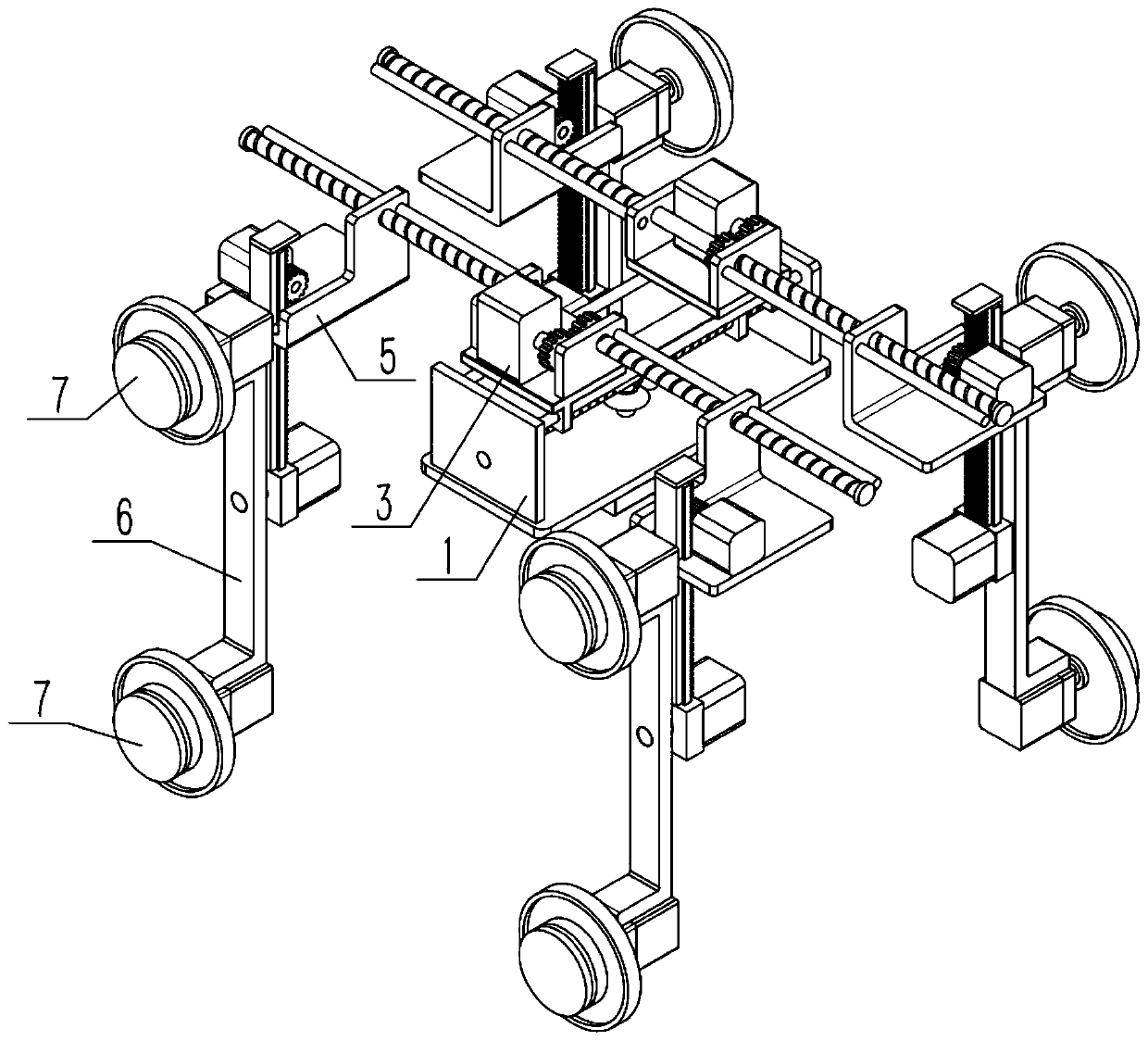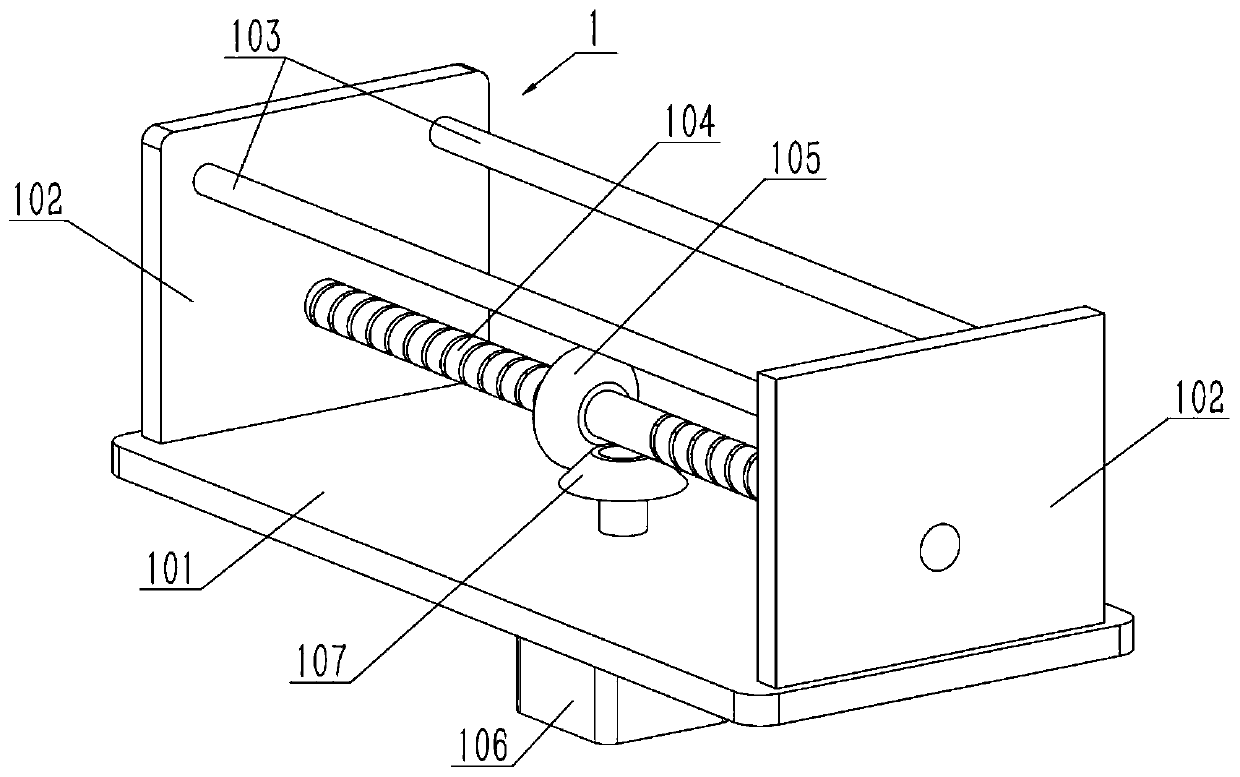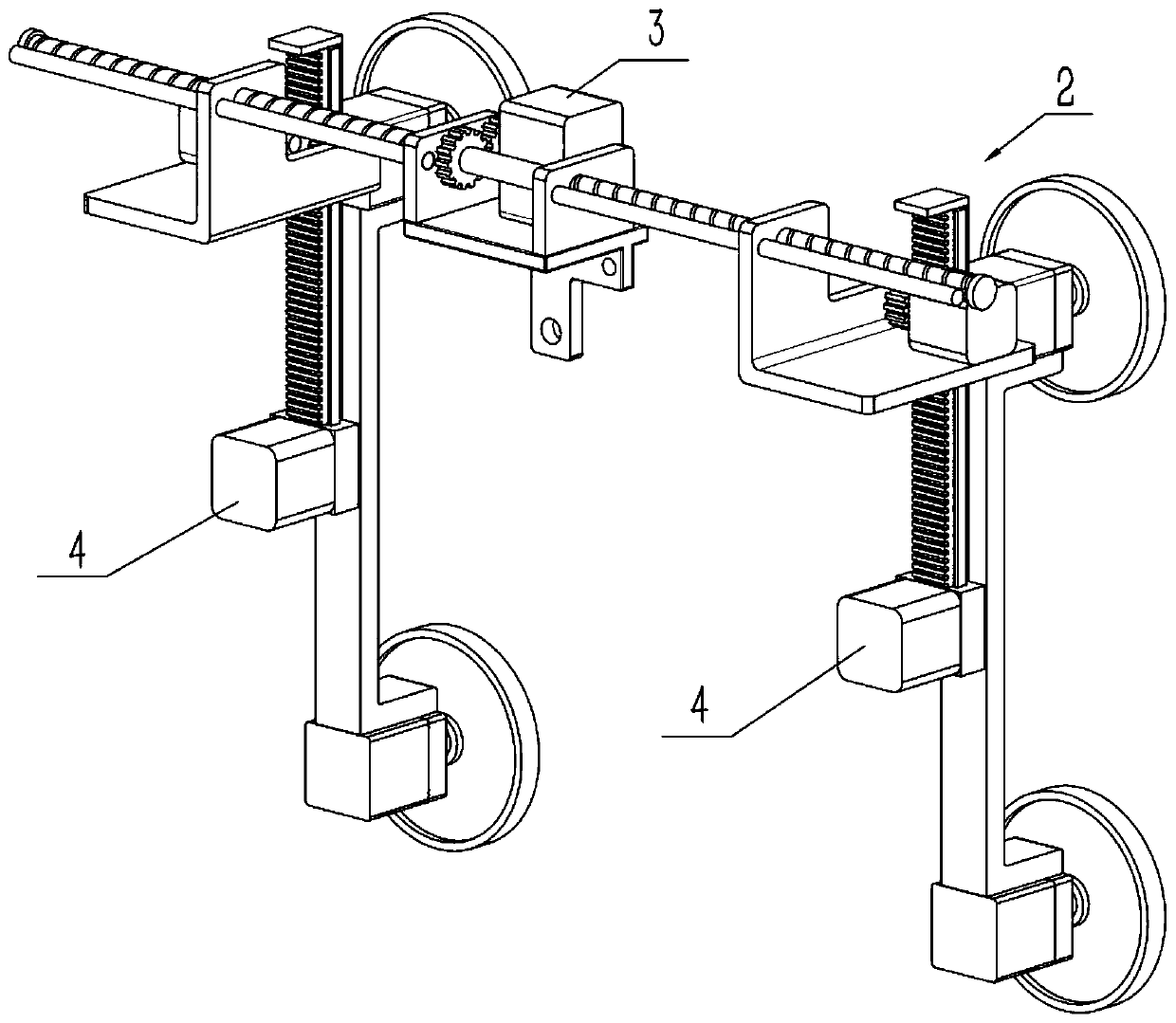Bionic obstacle-crossing wall-climbing robot
A wall-climbing robot, bionic technology, applied in the field of robotics, can solve the problems that cannot be used for climbing walls, robots cannot walk on the line, etc., and achieve the effect of increasing stability
- Summary
- Abstract
- Description
- Claims
- Application Information
AI Technical Summary
Problems solved by technology
Method used
Image
Examples
specific Embodiment approach 1
[0029] like Figure 1-8 As shown, a bionic obstacle-climbing robot includes a center-of-gravity adjustment mechanism 1 and a bionic obstacle-climbing assembly 2. Two bionic obstacle-climbing assemblies 2 are provided and are connected to the center-of-gravity adjustment mechanism 1. The adjusting mechanism 1 adjusts the distance between two bionic obstacle climbing components 2 . The bionic obstacle-climbing assembly 2 is used to imitate a person using both arms to support, knees and calves to climb mechanically, so as to complete the obstacle-climbing action. Two bionic obstacle-climbing assemblies 2 drive the whole device to move and overcome obstacles Or wall-climbing movement, when increasing the distance between the two obstacle-climbing wall-climbing components 2 and the adjustment mechanism 1, the stability of the movement can be increased, or adapt to the passages with different widths or adapt to the obstacles formed by two beam structures with different widths . Du...
specific Embodiment approach 2
[0031] like Figure 1-8 As shown, the center of gravity adjustment mechanism 1 synchronously adjusts the distance between two bionic obstacle climbing components 2 . During synchronous adjustment, the center of gravity adjustment mechanism 1 can always be at the center of the two bionic obstacle-climbing components 2 to maintain the stability of the entire robot movement.
specific Embodiment approach 3
[0033] like Figure 1-8 As shown, the center-of-gravity adjustment mechanism 1 includes a base plate body I101, a shaft seat I102, a round steel I103, a bidirectional screw I104, a helical gear I105, a motor I106 and a helical gear II107, and the two sides of the upper end of the base plate body I101 are respectively fixed with a shaft Seat I102, the two ends of the round steel I103 are respectively fixed on the upper side of the two shaft seats I102, the two ends of the two-way lead screw I104 are respectively connected to the lower side of the two shaft seats I102, and the helical gear I105 is fixed on the two-way screw In the middle of the bar I104, the motor I106 is fixedly connected to the lower end of the substrate body I101, the output shaft of the motor I106 is connected to the substrate body I101 in rotation, the upper end of the output shaft of the motor I106 is fixedly connected to the helical gear II107, and the helical gear I105 and the helical gear II107 are meshe...
PUM
 Login to View More
Login to View More Abstract
Description
Claims
Application Information
 Login to View More
Login to View More - R&D Engineer
- R&D Manager
- IP Professional
- Industry Leading Data Capabilities
- Powerful AI technology
- Patent DNA Extraction
Browse by: Latest US Patents, China's latest patents, Technical Efficacy Thesaurus, Application Domain, Technology Topic, Popular Technical Reports.
© 2024 PatSnap. All rights reserved.Legal|Privacy policy|Modern Slavery Act Transparency Statement|Sitemap|About US| Contact US: help@patsnap.com










